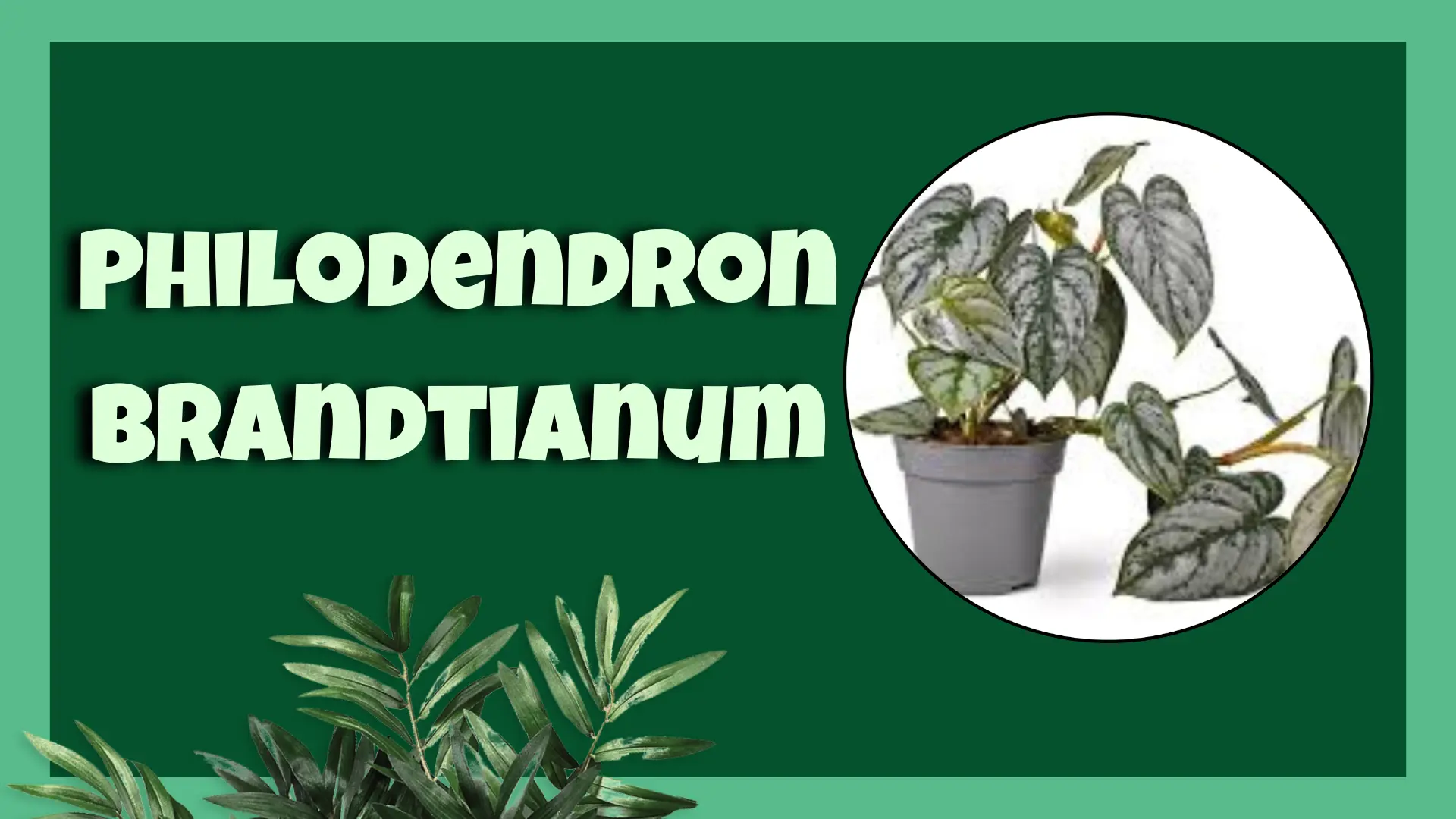If you are searching for a beautiful, easy-to-grow houseplant with striking foliage, Philodendron brandtianum, commonly called the Silver Leaf Philodendron or Silver Stripe Philodendron, is a top choice. With its olive-green leaves patterned with shimmering silver variegation, this tropical plant is both eye-catching and beginner-friendly. Whether you’re a seasoned plant enthusiast or just starting your indoor jungle, this philodendron offers charm, adaptability, and manageable care needs.
Introduction to Philodendron Brandtianum
Native to the rainforests of South America, Philodendron brandtianum is a climbing aroid in the Araceae family. Its most unique feature is the silvery mottling on its heart-shaped leaves, which makes it stand out among other philodendron varieties. Unlike some of its fussier cousins, this plant tolerates a wide range of conditions and adapts well to life indoors, thriving when given something to climb like a moss pole or trellis.
It’s also a fast grower, making it a rewarding choice for plant lovers who enjoy watching their greenery flourish.
Key Features of Philodendron Brandtianum
- Leaf Appearance: Olive-green heart-shaped leaves with silvery, reflective variegation.
- Growth Habit: Climbing or trailing vine.
- Mature Size: Indoors, it can grow up to 3–5 feet with proper support.
- Light Needs: Prefers bright, indirect light but tolerates medium light.
- Toxicity: Like other philodendrons, it is toxic to pets and humans if ingested.
How to Care for Philodendron Brandtianum
1. Light Requirements
Philodendron brandtianum thrives in bright, indirect light. Too much direct sunlight can scorch its delicate leaves, while too little light may cause the silver variegation to fade. A spot near an east- or north-facing window is ideal.
2. Watering
This plant enjoys consistently moist soil but does not like sitting in water. The best method is the soak-and-dry approach: water thoroughly when the top inch of soil feels dry, then allow excess water to drain out. Overwatering can lead to root rot, one of the most common issues with philodendrons.
3. Humidity and Temperature
Being a tropical plant, Philodendron brandtianum loves higher humidity levels (60–80%). It can adapt to average household humidity, but misting, using a pebble tray, or a humidifier will keep its foliage healthy. It thrives in 65–80°F (18–27°C) temperatures.
4. Soil Mix
Well-draining soil is crucial. A mixture of peat moss, perlite, and orchid bark works well. This ensures aeration and prevents waterlogging.
5. Fertilizing
Feed your philodendron with a balanced, water-soluble fertilizer once a month during the growing season (spring and summer). Reduce feeding in fall and winter when growth slows down.
6. Pruning and Training
Pruning helps maintain shape and encourages bushier growth. Provide a moss pole, trellis, or support for climbing growth, or let it trail beautifully from a hanging basket.
Propagation of Philodendron Brandtianum
Propagation is straightforward and rewarding:
- Stem Cutting Method
- Choose a healthy vine with at least 1–2 nodes.
- Cut just below a node using sterilized scissors.
- Place the cutting in water or directly in moist soil.
- Roots will develop in 2–4 weeks.
- Air Layering
- Wrap a damp moss ball around a node on the vine.
- Cover with plastic wrap to retain moisture.
- Once roots form, cut and pot separately.
Common Problems and Solutions
Like most houseplants, Philodendron brandtianum may face issues if not cared for properly:
- Yellow Leaves → Overwatering or poor drainage.
- Brown Leaf Tips → Low humidity or underwatering.
- Fading Silver Patterns → Insufficient light.
- Pests (Spider Mites, Mealybugs, Aphids) → Wipe leaves with neem oil or insecticidal soap.
Is Philodendron Brandtianum Pet-Friendly?
Unfortunately, no. Like most philodendrons, this plant contains calcium oxalate crystals, which are toxic to cats, dogs, and humans if ingested. Keep it out of reach of pets and children.
Why Choose Philodendron Brandtianum?
- Striking silver-patterned foliage.
- Easy to grow and propagate.
- Thrives indoors with minimal fuss.
- Adds elegance whether climbing, trailing, or potted.
This plant is an excellent choice for those who want a unique yet low-maintenance indoor plant.
Conclusion
Philodendron brandtianum is a tropical gem with silver-kissed leaves that bring life to any home. It’s forgiving, adaptable, and rewarding, making it suitable for both beginners and experienced plant parents. With the right care—balanced watering, bright indirect light, and a little extra humidity—you’ll enjoy a thriving plant that climbs gracefully and enhances your indoor jungle.
FAQs About Philodendron Brandtianum
1. What makes Philodendron brandtianum unique?
Philodendron brandtianum stands out for its olive-green leaves with silvery variegation. Unlike other philodendrons, its reflective patterns make it a decorative statement plant indoors.
2. How big can Philodendron brandtianum grow indoors?
When given proper care and a moss pole or trellis, this plant can grow 3–5 feet tall indoors. Without support, it often trails gracefully from hanging baskets.
3. Can Philodendron brandtianum survive in low light?
Yes, it tolerates low light, but its silver markings may fade. For the most vibrant foliage, place it in bright, indirect sunlight.
4. How often should I water Philodendron brandtianum?
Water when the top inch of soil feels dry. Avoid letting it sit in soggy soil, as this can cause root rot.
5. What is the best soil for Philodendron brandtianum?
A mix of peat moss, orchid bark, and perlite provides both aeration and drainage, mimicking its natural rainforest habitat.
For more plant care tips and inspiration, follow me on Facebook, Instagram, and Pinterest — @PlantifyBlog.


Wonderful paintings! That is the kind of information that are supposed to be shared across the web. Disgrace on Google for not positioning this post higher! Come on over and talk over with my website . Thank you =)